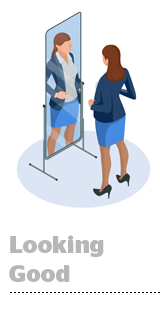
LinkedIn is rolling out lookalike audiences following a beta testing period that began late last year, the company said Wednesday.
Advertisers could already create matched audiences – basically, LinkedIn’s answer to custom audiences – built from a list of target contacts or accounts.
The addition of lookalike audiences is a good look for a platform that hasn’t been able to punch its way into the duopoly for advertiser spend. Facebook and Google have long offered lookalike audience capabilities, which allow advertisers to target users with similar characteristics to their existing customers.
Abhishek Shrivastava, LinkedIn’s director of product, acknowledged that LinkedIn is a little late to the game, but there’s a reason for that: B2B marketing is simply a different beast, he said.
On Facebook, for example, advertisers create lookalike audiences based from lists of individuals. Advertisers can now do the same on LinkedIn, but they can also create lookalike audiences using a list of company names, a must-have for anyone running an account-based marketing campaign.
LinkedIn can mine a lot of daily activity on the platform, such as individuals’ shares, comments, interests or likes. But companies on LinkedIn take far fewer actions, which means LinkedIn must look at other information, including what a company posts about itself on its profile page, for example, to inform a lookalike audience of similar companies.
“It’s a related challenge in terms of how to do the expansion, but it requires a different type of mindset to develop the tool,” Shrivastava said. “We don’t just want to build me-too products – we want to build products that work for these types of advertisers.”
In that vein, LinkedIn released two other targeting tools on Wednesday: templated audience segments and the addition of Microsoft Bing search data to LinkedIn’s interest-based targeting feature. Both were also in beta since late 2018.
On the Bing front, LinkedIn will start using search data to augment interest-based targeting segments, like “digital marketing,” say, or “productivity software.” Shrivastava was clear that LinkedIn isn’t exposing actual search terms, so there aren’t any privacy issues.
This is just one example of how LinkedIn and Microsoft are starting to work more closely together, Shrivastava said.
“The data we get from Bing will allow us to do more and more things of this nature,” he said, “where we can leverage data to make it more effective for B2B marketing.”
Last up, audience templates will surface common targeting segments within LinkedIn’s UI – think “IT decision makers,” “financial decision makers” or “corporate HR” – so that advertisers, particularly those that are new to the platform, don’t have to set up the targeting parameters on their own.
LinkedIn has 20 predefined audiences available to start, with plans to add more based on advertiser feedback.
All three features – lookalike audiences, audience templates and Bing search data targeting – will become available to advertisers over the next two weeks.
LinkedIn’s ad product road map will continue unfurling into the foreseeable, Shrivastava said, with additional investment in the LinkedIn Audience Network, ad optimization and innovative ad formats.
This post was syndicated from Ad Exchanger.


More Stories
For Most Brands, Tariffs Are Scary. American Giant Sees a Marketing Opportunity
Trump’s Tariffs Will Make AI Costs Soar, But Adoption Won’t Slow
Hershey Will Break Into Hollywood as Founder Gets the Biopic Treatment